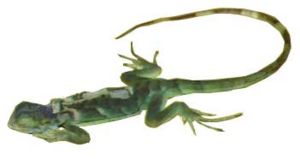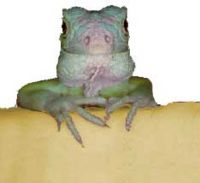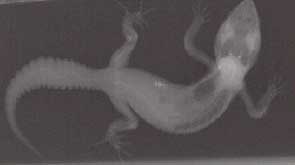Difference between revisions of "Lizard Metabolic Bone Disease"
| (50 intermediate revisions by 4 users not shown) | |||
| Line 1: | Line 1: | ||
| − | {{ | + | {{unfinished}} |
| − | [[Image:Mbd_iguana.jpg|300px|thumb|right|''' | + | [[Image:Mbd_iguana.jpg|300px|thumb|right|'''Green iguana with MBD''' (© RVC and its licensors, Sean Bobbit, Sue Evans, Andrew Devare and Claire Moore. All rights reserved)]] |
| − | [[Image:Iguana_mbd_swollenjaw.jpg|200px|thumb|right|'''Green iguana with MBD and swollen jaw''' ( | + | |
| − | + | [[Image:Iguana_mbd_swollenjaw.jpg|200px|thumb|right|'''Green iguana with MBD and swollen jaw''' (© RVC and its licensors, Sean Bobbit, Sue Evans, Andrew Devare and Claire Moore. All rights reserved)]] | |
| − | |||
==Introduction== | ==Introduction== | ||
| − | |||
| − | MBD is | + | Metabolic bone disease (MBD) is a complex disease that is associated with derangement of the metabolism of calcium, phosphorus and vitamin D3, poor husbandry and other diseases. |
| − | + | MBD is the most common disease in captive lizards, especially green iguanas; it is usually a result of poor husbandry. For example, deficiency in Vitamin D3 and/or UVB in combination with calcium deficiency leads to metabolic bone disease. Associated terms include fibrous osteodystrophy, nutritional secondary hyperparathyroidism, osteoporosis, osteomalacia and rickets. | |
| + | ==Dealing with MBD== | ||
| − | + | '''Examination''' | |
| − | + | The clinical signs in green iguanas vary. They include: | |
*Lethargy and reluctance to move | *Lethargy and reluctance to move | ||
| Line 23: | Line 22: | ||
*Weight loss to poor weight gain | *Weight loss to poor weight gain | ||
*Softening, swelling and deformities of bones e.g. soft mandibles | *Softening, swelling and deformities of bones e.g. soft mandibles | ||
| − | * | + | *Pathological fractures |
*Muscle fasciculations and seizures | *Muscle fasciculations and seizures | ||
| − | When juveniles have been affected during growth, they may have poorly mineralized and pliable mandibles which is a sign of prolonged MBD. This results in distorted jaw bones and a characteristic facial 'smile'. In | + | When juveniles have been affected during growth, they may have poorly mineralized and pliable mandibles which is a sign of prolonged MBD. This results in distorted jaw bones and a characteristic facial 'smile'. In chameleon species, MBD causes difficulty protruding or retracting the tongue. |
| − | Tremors, muscular fasciculations, paresis and seizures usually develop in more severe cases of MBD with developed | + | Tremors, muscular fasciculations, paresis and seizures usually develop in more severe cases of MBD with developed hypocacaemia. However in most cases, calcium and phosphate levels usually appear normal. |
| − | |||
| − | + | '''Diagnosis''' | |
Diagnosis is dependent on: | Diagnosis is dependent on: | ||
| − | *History - dietary and environmental evaluation | + | |
| − | * | + | [[Image:Leopardgecko_mbd_xray.jpg|300px|thumb|right|'''Radiograph of Leopard gecko showing signs of MBD. Decreased opacity to the pelvis and caudal vertebrae. No clear contrast between bone and soft tissue is a classic sign of MBD.''' (© RVC and its licensors, Sean Bobbit, Sue Evans, Andrew Devare and Claire Moore. All rights reserved)]] |
| + | *History - dietary and environmental evaluation | ||
| + | *Physical examination | ||
*Radiography - hypomineralisation of skeleton, pathological fractures, fibrous osteodystrophy. Radiographs are very effective in confirming the diagnosis; indeed, radiolucent transverse processes in the caudal vertebrae are pathognomonic of MBD in lizards. | *Radiography - hypomineralisation of skeleton, pathological fractures, fibrous osteodystrophy. Radiographs are very effective in confirming the diagnosis; indeed, radiolucent transverse processes in the caudal vertebrae are pathognomonic of MBD in lizards. | ||
| − | *Biochemistry - | + | *Biochemistry - calcium is generally within normal limits but may be low, especially in neurological cases |
| − | |||
| − | |||
| − | |||
| − | + | '''Therapy''' | |
| − | |||
| − | |||
| − | |||
| − | |||
| − | Carry out | + | Correct environment and dietary problems and advise access to sunlight. Carry out supportive care. Attempt only conservative repair of fractures. Administer oral calcium for non-neurological cases - calcium glubionate (NeoCalglucon, Sandoz) at 1 ml/kg bw q12-24h for 1-3 months. Administer parenteral calcium for neurological cases, preferably IV or ICo by slow infusion (100-500 mg/kg q6h) and concurrent diuresis with serial plasma calcium and phosphorus measurements. Calcitonin has previously been suggested as a treatment - 50 iu/kg IM weekly for 1-4 weeks, but its clinical effects have not been established (do not give to hypocalcaemic patients). |
| − | |||
| − | + | '''Prevention''' | |
MBD is prevented by providing correct housing and diet. However, caging and dietary requirements vary depending on the species of lizard. | MBD is prevented by providing correct housing and diet. However, caging and dietary requirements vary depending on the species of lizard. | ||
| − | |||
| − | |||
| − | |||
| − | |||
| − | |||
| − | |||
| − | |||
| − | |||
| − | |||
| − | |||
| − | |||
| − | |||
| − | |||
Revision as of 21:09, 1 March 2010
| This article is still under construction. |
Introduction
Metabolic bone disease (MBD) is a complex disease that is associated with derangement of the metabolism of calcium, phosphorus and vitamin D3, poor husbandry and other diseases.
MBD is the most common disease in captive lizards, especially green iguanas; it is usually a result of poor husbandry. For example, deficiency in Vitamin D3 and/or UVB in combination with calcium deficiency leads to metabolic bone disease. Associated terms include fibrous osteodystrophy, nutritional secondary hyperparathyroidism, osteoporosis, osteomalacia and rickets.
Dealing with MBD
Examination
The clinical signs in green iguanas vary. They include:
- Lethargy and reluctance to move
- Difficulty in lifting body off ground
- Ataxia, paresis and paralysis of hindlimbs
- Poor appetite to anorexia
- Weight loss to poor weight gain
- Softening, swelling and deformities of bones e.g. soft mandibles
- Pathological fractures
- Muscle fasciculations and seizures
When juveniles have been affected during growth, they may have poorly mineralized and pliable mandibles which is a sign of prolonged MBD. This results in distorted jaw bones and a characteristic facial 'smile'. In chameleon species, MBD causes difficulty protruding or retracting the tongue.
Tremors, muscular fasciculations, paresis and seizures usually develop in more severe cases of MBD with developed hypocacaemia. However in most cases, calcium and phosphate levels usually appear normal.
Diagnosis
Diagnosis is dependent on:
- History - dietary and environmental evaluation
- Physical examination
- Radiography - hypomineralisation of skeleton, pathological fractures, fibrous osteodystrophy. Radiographs are very effective in confirming the diagnosis; indeed, radiolucent transverse processes in the caudal vertebrae are pathognomonic of MBD in lizards.
- Biochemistry - calcium is generally within normal limits but may be low, especially in neurological cases
Therapy
Correct environment and dietary problems and advise access to sunlight. Carry out supportive care. Attempt only conservative repair of fractures. Administer oral calcium for non-neurological cases - calcium glubionate (NeoCalglucon, Sandoz) at 1 ml/kg bw q12-24h for 1-3 months. Administer parenteral calcium for neurological cases, preferably IV or ICo by slow infusion (100-500 mg/kg q6h) and concurrent diuresis with serial plasma calcium and phosphorus measurements. Calcitonin has previously been suggested as a treatment - 50 iu/kg IM weekly for 1-4 weeks, but its clinical effects have not been established (do not give to hypocalcaemic patients).
Prevention
MBD is prevented by providing correct housing and diet. However, caging and dietary requirements vary depending on the species of lizard.


